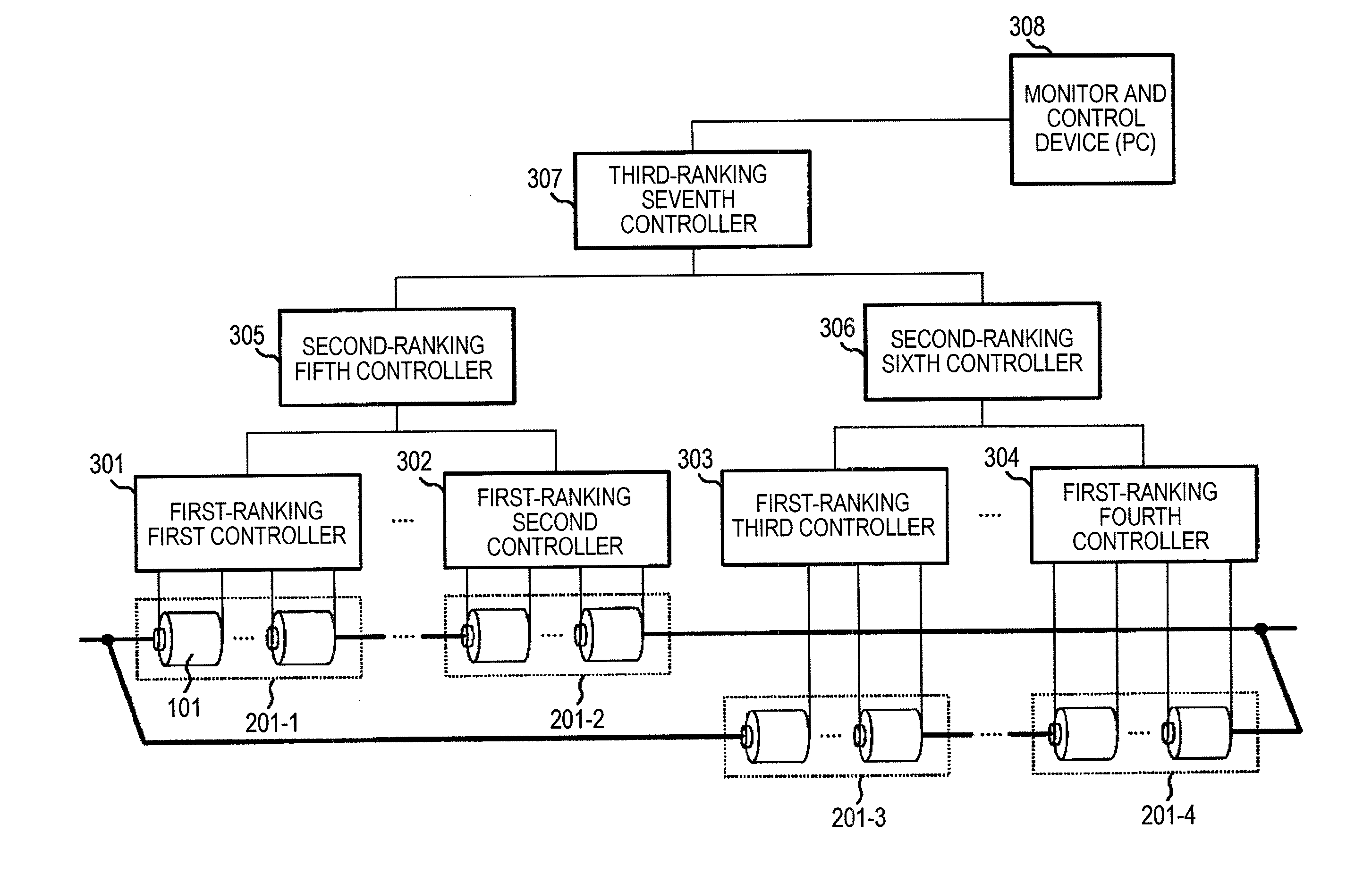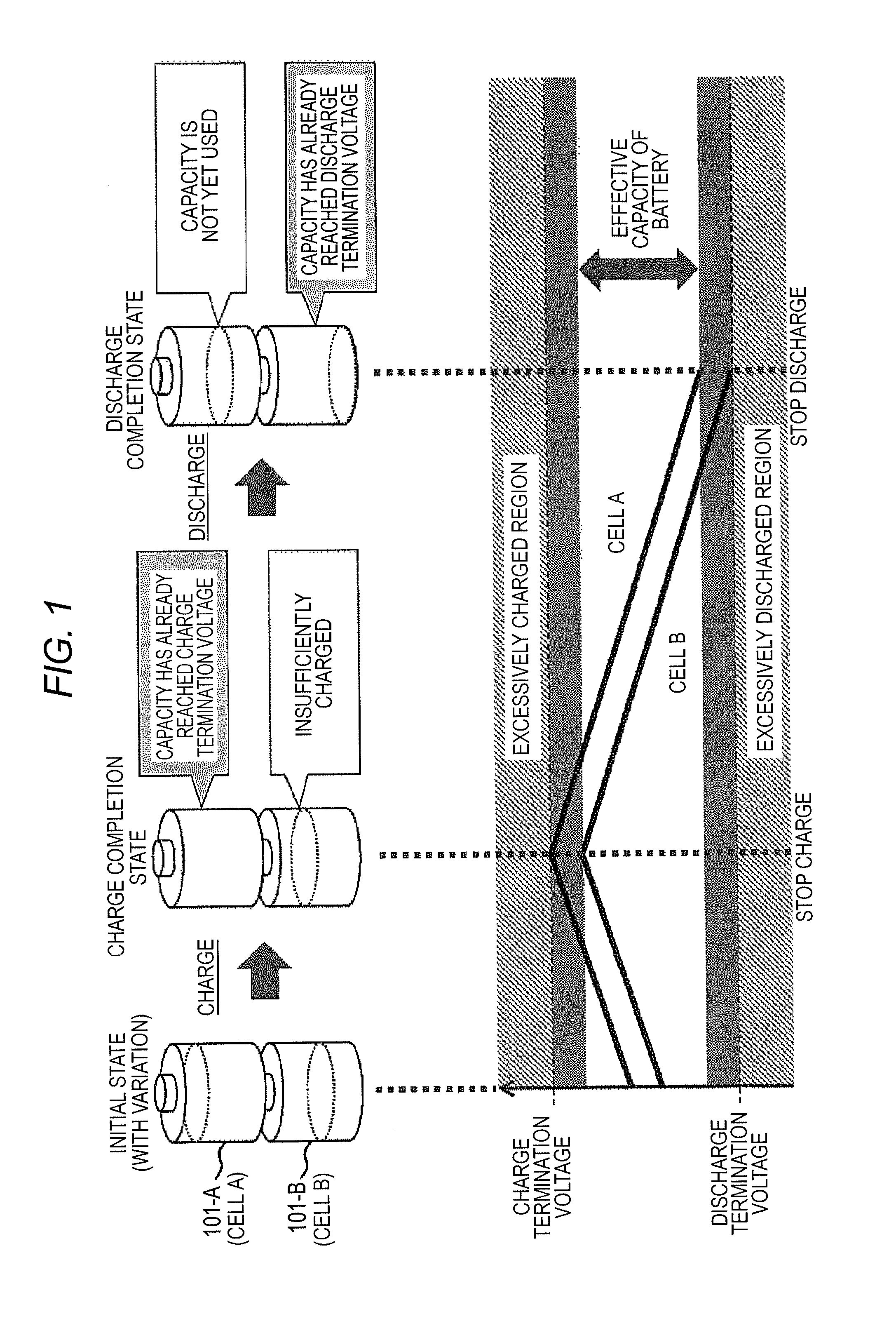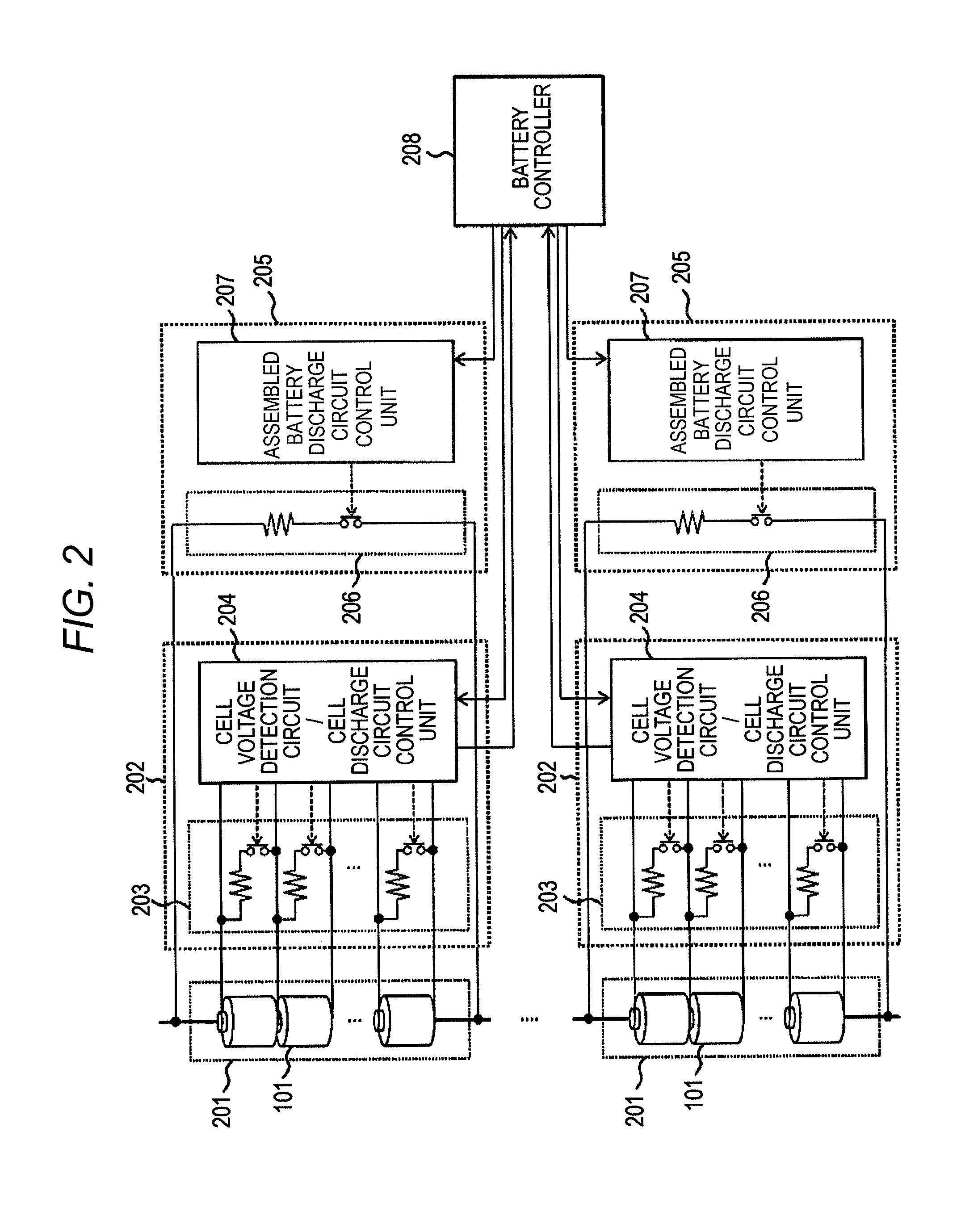Battery System Control Method
a battery system and control method technology, applied in the direction of secondary cell servicing/maintenance, electrochemical generators, transportation and packaging, etc., can solve the problems of difficult to apply balance control methods, difficult to interconnection to battery controllers b, etc., to reduce the amount of data, reduce the size of board circuits, and prevent a large amount of cell data
- Summary
- Abstract
- Description
- Claims
- Application Information
AI Technical Summary
Benefits of technology
Problems solved by technology
Method used
Image
Examples
example 1
[0026]FIG. 3 is a conceptual diagram of a battery system that includes three ranks, for description of a hierarchical control battery system shown in Example 1.
[0027]Plural battery cells 101 are connected to each other in series, in parallel, or in series-parallel, to form first to fourth assembled batteries 201-1 to 201-4. In order to equalize voltages between the battery cells 101, first-ranking controllers 301 to 304 are respectively connected to the first to fourth assembled batteries 201-1 to 201-4 to monitor a voltage of each battery cell 101, thereby performing a balance control. A second-ranking controller obtains voltage information from the plural first-ranking controllers, and gives a balance control instruction to the first-ranking controllers. A third-ranking controller obtains voltage information from the plural second-ranking controllers, and gives a balance control instruction to the second-ranking controllers.
[0028]A monitor and control device 308 that is capable of...
example 2
[0043]A balance control method that is applicable to the configuration of Example 1 will be described.
[0044]In general, in a battery system, it is necessary to inform the degree of a current charging rate to a user. Even in a case where variation is present in a charged state of a battery cell, it is important to inform a current average charging rate of the battery system in view of a residual charge capacity and a residual discharge capacity. Since the average charging rate of the battery system may be calculated from an average voltage of the entire cells, a controller of a hierarchical control battery system transmits an average voltage of a cell group managed by each controller to a higher-ranking controller.
[0045]In Example 2, a balance control in a case where an average voltage of cells is transmitted to a higher rank, and a discharge instruction measuring method will be described. FIG. 6 is a flowchart of a balance control of Example 2.
[0046]When an nth-ranking controller ma...
example 3
[0054]A balance control method that is applicable to the configuration of Example 1 will be described.
[0055]In Example 3, a control method in which a minimum voltage value of representative voltage values collected from a lower rank at the same time when an average voltage of cells is transmitted to a higher rank is used as a reference voltage of a balance control, and a calculation method of a discharge instruction will be described. FIG. 8 is a flowchart of a balance control of Example 3.
[0056]When the nth-ranking controller manages m pieces of (n−1)th-ranking controllers, the nth-ranking controller obtains m pieces of representative voltage information ((V(n-1, 1), V(n-1, 2), . . . , V(n-1, m)) about the (n−1)th rank (S801). In a case where a controller belongs to the first rank (n=1), a voltage obtained from the (n−1)th rank means a cell voltage.
[0057]Here, a minimum value of the m pieces of representative voltage information collected from the (n−1)th rank is set as an nth-rank...
PUM
| Property | Measurement | Unit |
|---|---|---|
| inter-terminal voltage | aaaaa | aaaaa |
| threshold | aaaaa | aaaaa |
| threshold value | aaaaa | aaaaa |
Abstract
Description
Claims
Application Information
 Login to View More
Login to View More - R&D
- Intellectual Property
- Life Sciences
- Materials
- Tech Scout
- Unparalleled Data Quality
- Higher Quality Content
- 60% Fewer Hallucinations
Browse by: Latest US Patents, China's latest patents, Technical Efficacy Thesaurus, Application Domain, Technology Topic, Popular Technical Reports.
© 2025 PatSnap. All rights reserved.Legal|Privacy policy|Modern Slavery Act Transparency Statement|Sitemap|About US| Contact US: help@patsnap.com



